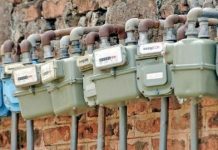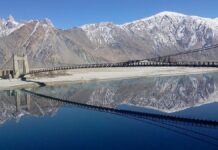Pakistan faces severe external financing challenges with rampant domestic political instability and higher rates in developed markets hitting capital inflows on the one side, while on the other rising commodity prices pump-up the import bill to unsustainable levels at a time when the country’s largest export markets in advanced economies are facing recession.
As a result, SBP reserves have declined rapidly while Pakistan’s dollar needs – projected at $120bn or so over FY23 to FY26 by the IMF – have never been higher. Although the government has been trying to arrange external financing via the IMF and “friendly countries”, the intervening period has led to severe foreign exchange shortages in the market with the rupee falling to unprecedented levels in the interbank and the kerb premium rising sharply.
Sadly, these challenges are not new to Pakistan. Throughout Pakistan’s 75 year history, repeated failures to mobilise domestic resources has created a growing need to borrow externally. And while Pakistan retained geopolitical significance – either due to the Cold War, the Soviet invasion of Afghanistan or in the post 9/11 world – the money kept rolling in. This relatively easy access to foreign capital allowed Pakistani policymakers to defer difficult but needed reform efforts.
This luck has continued in recent years too. Post the 2007/08 global financial crisis, developed country central banks engaged in quantitative easing via a rapid expansion of their balance sheets, flushing the global financial system with liquidity. Facing negative rates in advanced economies, this abundant liquidity led to a surge in capital flows to emerging markets, including Pakistan, in a ‘search for yield’. 2022 marks the end of this policy experiment as central banks in advanced economies end quantitative easing and raise policy rates, rapidly given the impact of the Russia-Ukraine conflict on commodity prices.
However, stop-go reform efforts and political instability means Pakistan is ill-prepared. This, unfortunately, is not new. Pakistan has had a long history with its creditors, wherein debt restructurings have been a regular feature in nearly every decade in the last 50 years. Other than Pakistan’s inability to maintain foreign exchange reserves or increase domestic revenue collection, previous debt restructurings have followed periods of severe political instability (for eg, the late 1960s, and the late 1970s/early 80s), and/or exogenous unanticipated shocks (nuclear tests in 1998; Covid 19 in 2020).
As we highlight below, current pressures are the result of similar endogenous and exogenous shocks that led to Pakistan to external liquidity challenges in the past: a poor reform effort under the previous administration’s 3.5 year stint in office, high levels of on-going political instability, changing geopolitical dynamics with the US’s exit from Afghanistan, high commodity prices and capital outflows from emerging markets due to monetary policy normalisation in advanced economies.
The first borrowings
Pakistan first experienced difficulties with its external repayments long before the cessation of East Pakistan, which was generally viewed as the prelude to the first rescheduling in 1971. Consortium (OECD) countries were informed of payment difficulties in May 1968, 18 years after foreign assistance first started flowing to the country in 1950. Citing dwindling foreign exchange revenues from East Pakistan (primarily from loss of revenue from jute exports, the largest foreign exchange earner in both the eastern and western halves of the country) and decreasing concessional loans and grants, Pakistan declared a moratorium on payments in May 1971.
The root cause was the Ayub era. Often championed as a time of great growth and the ‘golden years’ for Pakistan’s economy, much of it was based on external borrowing to fund investments given low domestic savings. Ayub’s economic management mixed heavy borrowing from external creditors with Soviet style five-year-plans which rapidly industrialised the country. But even as Pakistan celebrated its ‘Great Decade’ of development from 1958-1968, the chinks in this strategy’s armour were turning into gaping holes.
But it isn’t as if Pakistan only began to borrow money in the Ayub era. No. At independence, Pakistan’s only external debt was to India –of Rs2.0bn representing its 17.5% share of the pre-partition liabilities of India. An initial debt servicing moratorium meant servicing only began from August 15, 1952. However, with the new nation facing severe resource constraints in dealing with millions of streaming refugees, in October 1947, Pakistan requested $2bn from the US which was declined. However, a $770k in-kind grant (from surplus goods) was made in 1948, while Pakistan did get grant based assistance over 1947-49 from Canada, Australia and New Zealand.
Fast forward six years, with geopolitical choices made and the 1954 US-Pak defence pact signed, annual military and economic assistance started to flow reflecting the US throwing money at countries as it built alliances during the Cold War. Supplementing these inflows, the 1st World Bank loan was approved on March 27, 1952, worth $27.2mn, disbursed in USDs & French Francs, for railways. The period also marked the beginning of Pakistan’s relationship with the IMF, with the first stand-by agreement penned in 1958, when Ayub Khan first came into power. That arrangement though was never drawn.
Thus, the reliance on external aid began in the 1950s – and this was cheap money, with large grant elements, long repayment periods at low borrowing costs. This though changed in the 1960s. Now used to foreign aid, Pakistan continued to borrow except now the money was not coming in as grants. From 1960-65, while foreign assistance rose, concessional assistance fell to 21% of the total assistance coming in. From 1965-1970, this figure fell was as low as 9%. Meanwhile, the percentage of ‘hard loans’ (i.e. non concessional financing) rose from 23% in the 1950s to 32% from 1961-65, and 39% over 1966-70.
This meant that by the mid to late 1960s, while Pakistan had managed to industrialise quickly, its creditors were calling. The grace period for non-concessional debts was ending, and Pakistan would suddenly have to spend more on paying back its debts — i.e. debt servicing. Highlighting this, in 1969, debt repayments had risen to 25% of exports from less than 10% from 1960-65. Unsurprisingly, these challenges led Pakistan to the IMF again, in both 1965 and 1968, and on both occasions Pakistan did draw the loans, becoming a debtor to the IMF for the first time. Both programs delivered little – by 1971-72, the debt servicing to exports ratio was even higher at 34.5%.
Clearly, Pakistan was floundering. Suddenly, a major chunk of a limited budget already strained by extravagant military spending was going to go towards repaying debts. Add to this, the Bangladesh war of independence and it was clear a debt restructuring was needed.
The first payment difficulties: 1960s
The first time Pakistan made it officially known that they were experiencing issues paying back their debts and needed restructuring was in 1968. Negotiations carried on, but the request for debt relief was rejected because of political reasons – creditors’ faith in macroeconomic management during periods of political instability understandably declines. Indeed, back in 1970, General Yahya Khan had rejected the elections and was not allowing the Awami League to form the federal government even though they had the numbers. This refusal to transfer power to elected officials meant debt relief was rejected and, instead, reforms were suggested.
Meanwhile, as the situation got worse in then-East Pakistan, the economy’s engine light began blaring. Private investment declined due to the upheaval, while public investment was constrained by high defence spending. At the same time, a wheat shortage meant imports rose over 1970-71. When the war fully broke out on two fronts, there was a marked (and understandable) decline in aid flows, while capital went out of the country and the import bill spiked because of higher military needs. Foreign exchange reserves hence fell to $160 million in January 1971, and Pakistan began running arrears to commercial creditors.
Attempts to help the external sector pressures led to a 57% devaluation in 1972. This proved to be a major hit on public finances, which were already strained due to high defence expenditures. By the time Bhutto came to power in 1973, a drought was weighing down agriculture production while labour unrest and power shortages were hitting industrial production. As it turned out, the unbridled growth of the 1960s, driven by external aid, led to problems catalysed by the civil war and continued political unrest. That is when it became necessary for Pakistan to restructure its external debt.
The tumultuous 1970s
The three years following the Bangladesh War of Independence were difficult. Given external sector difficulties, a payments moratorium was allowed on the 1st of May 1971 — which meant Pakistan’s creditors allowed the country to suspend debt repayments for an initial period of six months. This moratorium was extended up until January 1972, and again by another three months in anticipation of a debt rescheduling agreement.
Following negotiations, a short-term arrangement was agreed in May 1972, applicable retroactively from May 1971 for two years and two months to June 1973. However, with Pakistan losing its eastern wing, there was disagreement over who would pay back how much of the outstanding external debt. This short-term agreement thus gave Pakistan and Bangladesh time to determine the debt split, but until such a time that an agreement was reached, Pakistan would continue to service all debt. However, an agreement remained elusive. In March 1973, the Pakistan government said it would stop paying for Bengali external debt after June 1973.
To help avert default, Western creditor countries said in June 1973 that Pakistan would not have to service debt related to projects visibly located in Bangladesh post June 1974. In addition, creditors also decided, and a second short term agreement was put in place in 1973, extending the previous agreement to June 1974.
Together, both agreements rescheduled 56% of payments due over June 197l – June 1974 to 1973-77. In the meantime, discussions on providing long term (LT) debt relief to help Pakistan out of its problems continued. Following a World Bank study on LT debt relief, another agreement was signed on June 28, 1974, extending debt relief by creditor countries to December 1978. This had been a relatively good debt restructuring deal, partially because of exogenous factors and natural calamities: the oil price shock that had started in mid 1973 and lasted well into the 80s, there were cotton crop failures because of pest attacks and floods in 1974, 1975, such that from 1976-77 Pakistan was importing expensive fuel in great volumes while deprived of one of its largest exports.
With exports hit and imports higher, the trade deficit rose from $337mn in 1971 to $1.2bn by 1976-77. Hence, as the relief provided by ST agreements ended, the resumption of normal payments and previous rescheduled dues would have been impossible.
Changing fortunes in the 1980s
The debt restructuring after the 1971 war had effectively deferred Pakistan’s payments to December 1978. From 1978-1980, as the previous debt rescheduling agreements came to an end, Pakistan was once again in a situation similar to 1968 – little had been done to strengthen the economy. Instead of focusing on improving the mobilisation of domestic resources, political crises had continued to plague the country. The Bhutto administration had spent its time crushing dissent, making concessions to the religious right, belittling political opponents, and breaking Pakistan’s close alliance with the United States. Things got significantly worse with the ouster of Zulfiqar Ali Bhutto in June 1977 by a military coup led by General Zia ul Haq.
By 1979, with President Zia newly in power, debt servicing payments once rose sharply as the clock on post-1971 debt restructuring agreements ran out. At the same time, official development assistance declined by 45% over FY76-80, reflecting the domestic political situation. Further, the changing nature of the provided towards project aid constrained its use for general balance of payment support.
Pakistan hence proposed rescheduling 60% of payments due between July 1978 to June 1983. The request was rejected at creditor meetings in June 1978. Instead, the World Bank suggested bilateral arrangements for debt relief. Despite securing such agreement with some creditor countries, this turned out to be a temporary breather. Continuing balance of payments difficulties, in particular due to a widening trade deficit, meant that from January 1980 to January 1981, Pakistan was once again in talks with the Paris Club of bilateral creditors. Pakistan’s external debt ratio was at 40% of the Gross National Product at this point, one of the highest in the world. Servicing this debt was eating into aid inflows and reducing net transfers. In simple words, Pakistan was using fresh borrowing to pay off its previous borrowing with little attention to FX generation capacity — resulting in a continuous debt loop.
Without debt relief, external-debt-servicing would consume 28% of exports in 1981 while low foreign exchange reserves of $450mn meant the country had no ability to weather external shocks. Hence, Pakistan continued pushing for deeper debt relief, in particular at creditor meetings in June 1978, 1979 and again in 1980.
By the June 1980 meeting, Pakistan’s geopolitical significance had increased dramatically following the Soviet invasion of Afghanistan.Pakistan was not only a very important ally to the United States, it was also letting in hundreds of thousands of Afghan refugees. Creditors hence agreed in principle to give debt relief. This was, however, made conditional on reforms under an IMF programme that would enable higher domestic savings, improve resource allocation and improve spending efficiency. A debt rescheduling agreement was thus signed in January 1981.
As the above highlights, Pakistan was in near constant communication with its creditors for debt restructuring from the late 1960s through the early 1980s. As volatile domestic politics hit aid inflows, Pakistan’s reliance on external borrowing became apparent, while the pressure of the 1971 war and natural disasters added to a desperate need for debt relief. However, Pakistan never got this deep relief which meant constant payment difficulties into the 1980s. That changed with the Soviet invasion of Afghanistan.
The lost 1990s
Pakistan’s increased geopolitical significance meant relatively easier balance of payments financing throughout the 1980s. As the Soviets exited Afghanistan and domestic politics turned to a tug-of-war after General Zia’s death, aid flows turned, and Pakistan was on a constant search for new forms of external borrowing with debt ratios rising sharply. Indeed, the mid 1990s saw Pakistan issue its first Eurobond, for example.
This formed the backdrop to the next debt restructuring. Following nuclear tests in May 1998, which led to international sanctions and a freeze of foreign currency accounts, Pakistan was again facing external payment difficulties. As if these challenges were not enough, domestic politics turned – a military coup in October 1999 ousted the elected prime minister. By then, Pakistan had already been in discussions with bilateral and commercial creditors. However, post the 9/11 attacks, Pakistan turned from a pariah nation to a major ally to the United States. That aided 3 debt restructurings agreements – the first two rescheduling arrears and payments, while a third provided a debt stock reduction in November 2001.
Enter the 2000s
Since 2001, although Pakistan has been able to maintain a clean repayment record, the country’s gross external needs continued to rise sharply. Meanwhile, poor macroeconomic management, expansionary fiscal policy and continued political instability post Panama leaks kept FX reserves under pressure in the lead-up to the 2018 elections. With the new, first-time incumbents dilly-dallying over how to address dwindling FX reserves for nearly a year, an IMF program was finally signed in mid 2019. As fate would have it, reforms efforts and sustained fiscal adjustment would again take a backseat as Covid 19 blazed across the world.
Despite a marked improvement in the balance of payments under theIMF program, Pakistan was amongst the first to sign-up for the G20 backed Debt Service Suspension Initiative (DSSI) devised to help low income countries cope with Covid 19. That meant Pakistan did not have to service dues to bilateral creditors between May 2020 to end 2021. The latter coupled with the post CV19 collapse in commodity prices helped Pakistan build strong FX buffers, but underlying fragilities have again been exposed as domestic political uncertainties have mounted at a time when Pakistan, like other emerging markets, faces a negative external shock – rising global interest rates.
What now?
As things stand, Pakistan compares poorly with rating & regional peers on most debt metrics – whether stock measures, liquidity ratios, import cover of FX reserves or the burden of debt servicing. Current debt levels and low FX reserves means Pakistan walks a thin line with little space to deal with any exogenous or endogenous shocks.
So what now? Reducing debt levels and increasing external liquidity is not rocket science but the options are limited: (a) increase GDP, preferably via growth (and not inflation), which along with better documentation, enhances domestic resource mobilisation. And/or, (b) pay down the debt, by generating primary surpluses, again via both revenue and spending measures, privatisation and by enhancing FX generation capacity. However, both (a) and (b) require sustained political commitment to difficult reform measures that unhinge deep-rooted vested interest groups. While this has been missing in Pakistan even in the best of times, the powers-that-be should recognise that beyond these measures, the only alternative is a debt restructuring. And this time, not only are creditors more demanding, markets are also unforgiving.
The author is a macroeconomist and sovereign debt strategist with 20 years of experience in investment banks, multilateral agencies, asset management and the central bank of Pakistan
The above views are the personal opinions and assessments of the author. They should not be construed as investment advice. He can be reached on [email protected]


























Very informative article. Really appreciate your research and efforts
Thank you for providing a detailed explanation of Pakistan’s external debt restructuring
“Pakistan faces severe external financing challenges with rampant domestic political instability and higher rates in developed markets hitting capital inflows on the one side, while on the other rising commodity prices pump-up the import bill to unsustainable levels at a time when the country’s largest export markets in advanced economies are facing recession”
So many things I disagree with:
1. Unlike India, China and South Korea which receuved significant capital portfolio inflows whose reversal has hurt them, Pakistan received minimal flows amd hence had minimal impact.
2. Is it just commodity supercycle which led to unsustainable imports or is deteriorating agriculture an important reason? In the past Pakistan used to expprt wheat, cotton and sugar which it now imports.
Thanks for the good information, I like it very much. Nothing is really impossible for you. your article is very good.
사설 카지노
j9korea.com